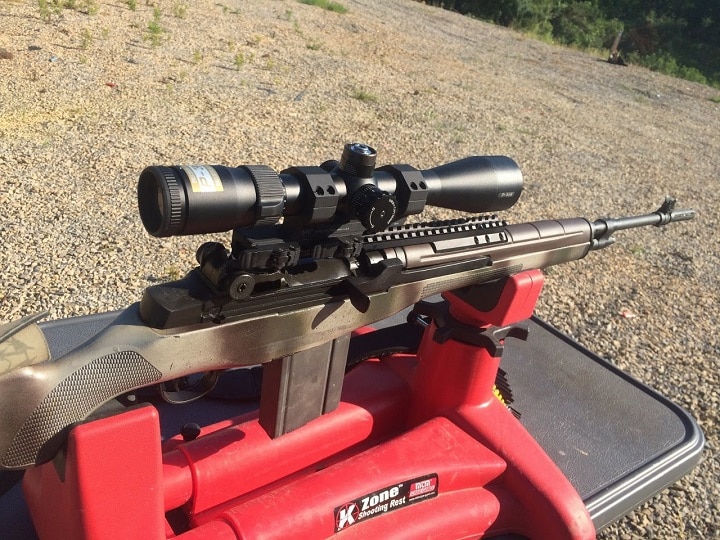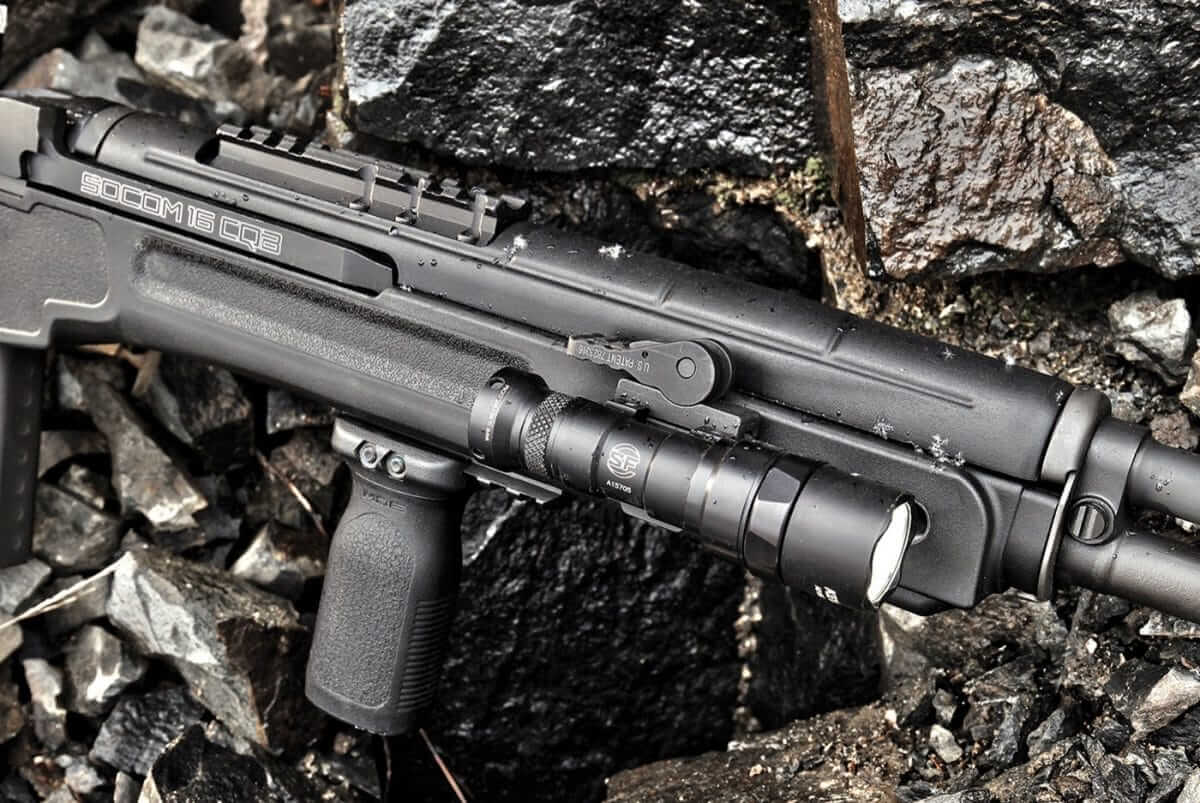

You can also manually engage it with the magazine ejected, but you have to pull the bolt back to release it and put it into battery. On the left side of the receiver is a bolt lock that will engage if you pull back on the bolt on an empty magazine. The rotating bolt functions much like that of the M14 and it has the same familiar charging handle.

#M1A SOCOM CQB OPTICS FULL#
If you want to keep it simple with just maybe a long-eye relief scope or a red dot optic, the classic SOCOM 16 is still full of features. If you want to add AR-style accessories to the SOCOM 16, the CQB stock is the way to go.

Living in a restricted state, I opted for the original SOCOM 16 design with a black composite straight stock, but the carbine is also available in a CQB stock with a five-position adjustable buttstock and adjustable cheek piece, pistol grip, and M-LOK rails at the front of the gun for accessories. The M1A SOCOM 16 was not, however, designed for the woods, but for more tactical situations. 308 chambering, it can be used as a scout rifle quite easily, though it is a tiny bit heavy at just under 9 pounds without optics or ammo. It would make a terrific brush gun and with its forward mounted picatinny optics rail and. It feels handy, the way a scout rifle does or the way a lever-action carbine does-it comes to the shoulder and the rear peep sight to the eye with almost no effort at all, like it belongs there.Ĭould you hunt with this gun? Absolutely. The looks, furniture, and controls all scream M1A, just more compact. 308 in this small and relatively light gun. That barrel is mated to the gun’s gas system with a proprietary muzzle brake that helps tame the. rifle without heading into SBR territory-the “16” comes from the gun’s 16-inch barrel. Springfield cut down their semi-auto M1A rifle as much as possible to achieve a lighter, shorter semi-auto. A solid “truck gun”, this compact rifle won’t allow you to sacrifice power, so do the only reasonable thing - Bring Enough Gun™. 7.62 NATO power in a package this small was previously unthinkable, but this ultra-modern rifle will have you believing the extraordinary. It also features the Springfield Armory® forward scout-style picatinny mount, an enlarged ghost ring aperture rear sight, and XS Sights® tritium insert in the front sight to give you lightning fast target acquisition capability. A handy, tactical rifle, the M1A™ SOCOM 16 has a specially-engineered 16.25″ barrel that’s mated to the gas system with a proprietary muzzle brake to reduce felt recoil in a big way. I never had a malfunction or jam with that rifle with any of the mounts featured in this report.The M1A™ SOCOM 16 takes the classic M1A to a whole new level. I fired the first magazine slow fire, five or six of the second magazine with the rifle held off the shoulder with the ejection port facing up, and then dumped the remaining shots from the shoulder as fast as I could squeeze the trigger. I mounted each one of them on a Springfield Standard M1A and tested for function issues or interference, running at least two full 10-round magazines of Black Hill's 155-grain match load or Hornady's 155-grain TAP ammo-two of my favorite, ultra-reliable, very versatile loads-through the rifle. Once properly mounted, all the mounts tested and featured here will give good service. Several of the mounts featured here, as well as the few tools necessary to properly attach them, are available through Brownells.
#M1A SOCOM CQB OPTICS SERIES#
Accompanying is a series of photos detailing the process, with additional photos showing any unique differences particular to mounts such as the A.R.M.S. The mounting process is very similar for the different mounts. It minimizes the effect of action-flexion (yes, M14 actions actually flex slightly with each firing), supports the mount through recoil, and greatly broadens its base, adding stability that helps maintain zero. That pressure point, which is absent in two-point mounts, makes all the difference. One is the heavy screw in the side of the action, another is the stripper-clip dovetail, and the third is a pressure point on the top front of the receiver. Key to the mount's ability to withstand the forces of high-volume heavy recoil without loosening or changing zero are those three contact points. I'll stick my neck out and say that almost all currently available three-point mounts, regardless of manufacturer, are some variation of the Brookfield design. The first particularly successful M14 mount was a three-point design developed for the Special Forces in the '80s by Brookfield Precision Tool.


 0 kommentar(er)
0 kommentar(er)
